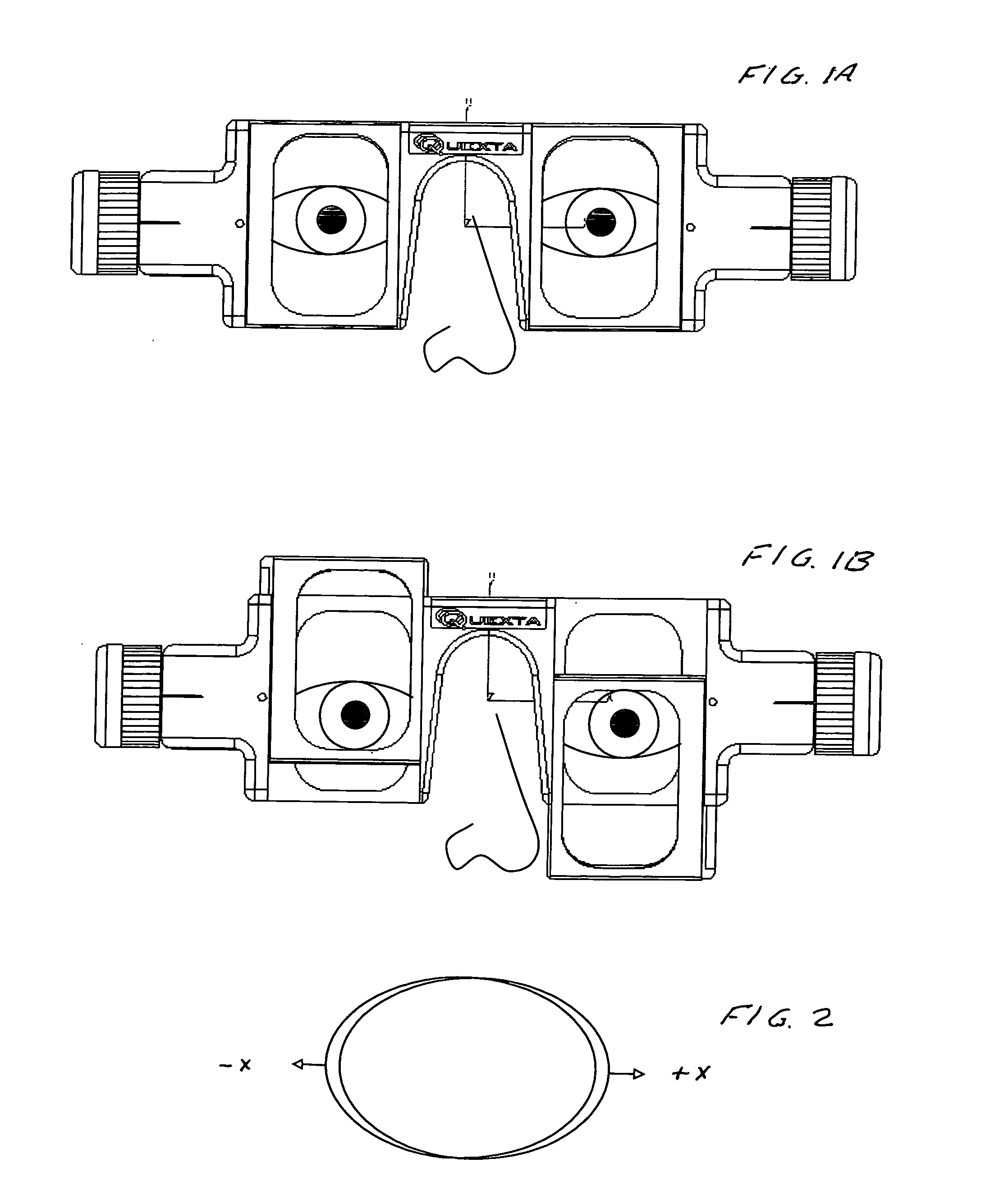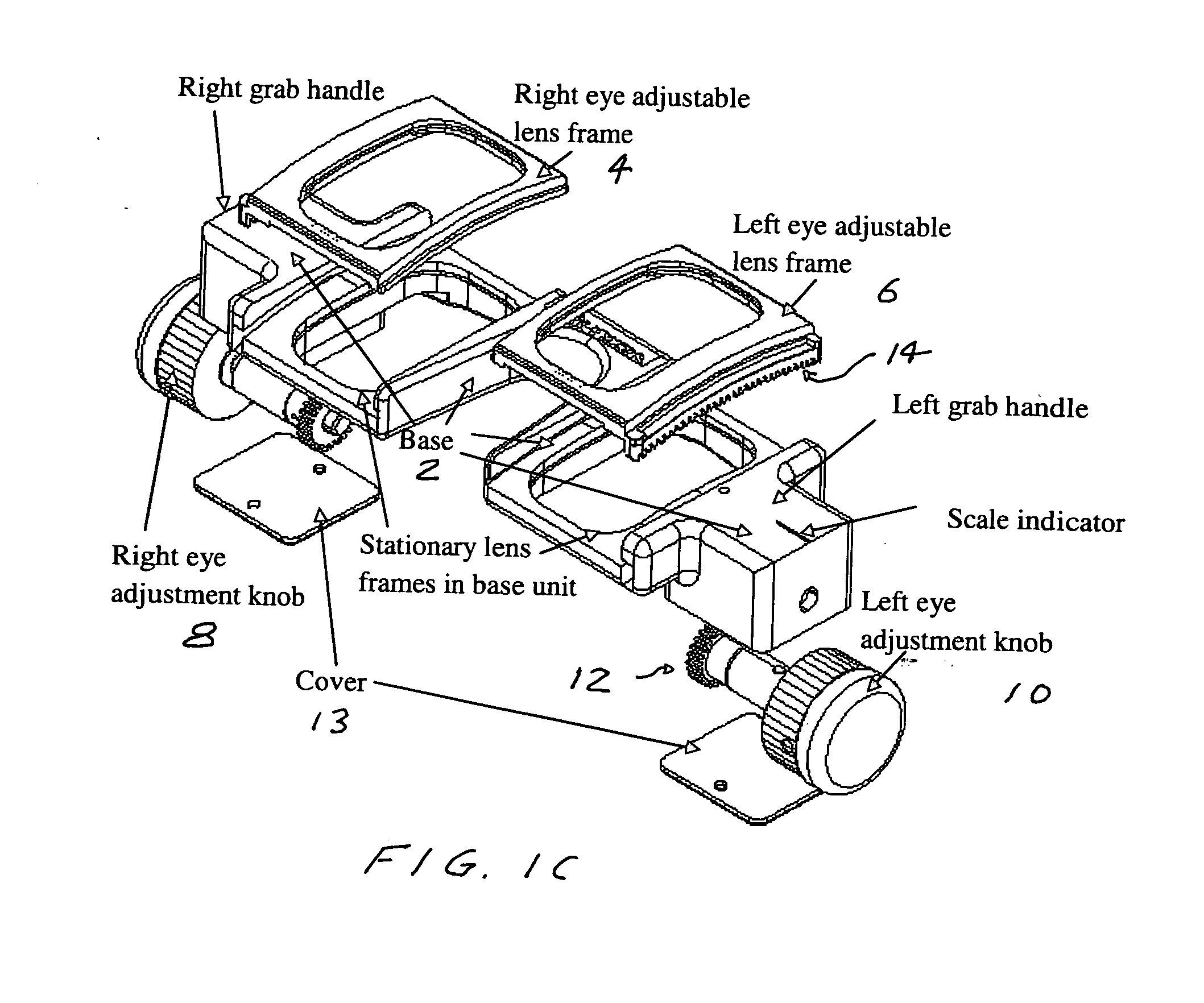Portable Diopter Meter
a diopter meter and portability technology, applied in the field of portable diopter meter, can solve the problems of increasing the optical power of the eye, increasing the convexity of the lens, and severe lack of trained eye care professionals that can perform the rather complicated procedure of phoropter refraction, so as to facilitate the use of the device and screen for refractive error problems. the effect of easy and quick holding
- Summary
- Abstract
- Description
- Claims
- Application Information
AI Technical Summary
Benefits of technology
Problems solved by technology
Method used
Image
Examples
Embodiment Construction
[0042]FIGS. 1A and 1B show the diopter meter in its position in front of the patient's eyes, with lens settings in the null position. A pair of lenses sits in front of each eye, the back lens is stationary and the front lens is adjustable.
[0043]The knobs on the diopter meter are turned to adjust the prescription for each eye by moving one of the lenses in each pair, independently for each eye. The diagram below shows an example adjustment. In this case the left eye has its adjustable lens adjusted down, and the right eye has its adjustable lens adjusted up. The embodiment shown in FIGS. 1A and 1B has the front lens moving up and down.
Lens Overview
[0044]The eyeglass lens manufacturing method we use is based on molded lenses according to Spivey which is a variant of the so called “Alvarez” lens shape, invented by Luis Alvarez in 1967. The Alvarez technique uses a pair of complementary third order polynomial surfaces, which are translated in a direction perpendicular to the vision dire...
PUM
 Login to View More
Login to View More Abstract
Description
Claims
Application Information
 Login to View More
Login to View More - R&D
- Intellectual Property
- Life Sciences
- Materials
- Tech Scout
- Unparalleled Data Quality
- Higher Quality Content
- 60% Fewer Hallucinations
Browse by: Latest US Patents, China's latest patents, Technical Efficacy Thesaurus, Application Domain, Technology Topic, Popular Technical Reports.
© 2025 PatSnap. All rights reserved.Legal|Privacy policy|Modern Slavery Act Transparency Statement|Sitemap|About US| Contact US: help@patsnap.com



